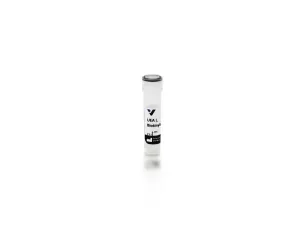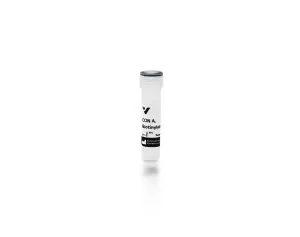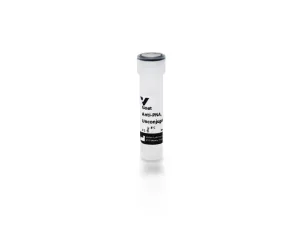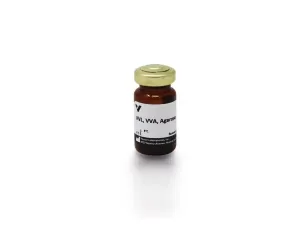Vector Laboratories is closed for the President’s Day on Monday, February 19th. We will be back in the office on Tuesday, February 20th.
We will respond to emails upon our return. Have a wonderful day.
Menu
Vector Laboratories is closed for the President’s Day on Monday, February 19th. We will be back in the office on Tuesday, February 20th.
We will respond to emails upon our return. Have a wonderful day.
Galanthus nivalis lectin, unlike most mannose-specific lectins, is not a metalloprotein and does not require Ca++ or Mn++ for binding.
Binding seems to be preferentially directed toward structures containing (α-1,3) mannose residues. Also in contrast to most mannose-binding lectins, GNL will not bind α-linked glucose. Reports indicate that this lectin binds rat and mouse IgM but not IgG. The only protein from human serum reported to bind to this lectin is α2-macroglobulin. GNL binds to many viral glycoproteins.
Biotinylated Galanthus nivalis lectin has an appropriate number of biotins bound to provide the optimum staining characteristics for this lectin. This conjugate is supplied essentially free of unconjugated biotins and is preserved with sodium azide.
| Unit Size | 2 mg |
|---|---|
| Applications | Immunohistochemistry / Immunocytochemistry, Immunofluorescence, Blotting Applications, Elispot, ELISAs, Glycobiology |
| Recommended Usage | For most applications, we recommend a freshly prepared working solution of 5-20 µg/ml in the below buffer. A precipitate may form during storage.This does not have a significant adverse effect on the product.If a precipitate forms upon long-term storage, warm to 37 ºC and centrifuge before use. |
| Recommended Storage | 2-8 °C; Store frozen for long term storage |
| Solution | 10 mM HEPES, pH 7.5, 0.15 M NaCl, 0.08% sodium azide, 0.1 mM CaCl2. |
| Concentration | 2 mg/ml |
| Conjugate | Biotinylated |
| Sugar Specificity | Mannose |
From our experience we have found that some lectins require Ca++ to be present for optimal binding activity. We suggest using calcium chloride (CaCl2) to fortify working solutions and ensure a minimum level of Ca++ is met. This may be particularly pertinent if using phosphate based buffers as diluents and storage solutions.
This biotinylated lectin is an ideal intermediate for examining glycoconjugates using the Biotin-Avidin/Streptavidin System. First the biotinylated lectin is added, followed by the VECTASTAIN ABC Reagent, Avidin D conjugate, or streptavidin derivative.
Inhibiting/Eluting Sugar: 100 mM – 200 mM α-methylmannoside
Applicable patents and legal notices are available at legal notices.




Stay in the Loop. Join Our Online Community
Together we breakthroughTM

©Vector Laboratories, Inc. 2024 All Rights Reserved.
How do I Request a Quote?
To request a quote for products: